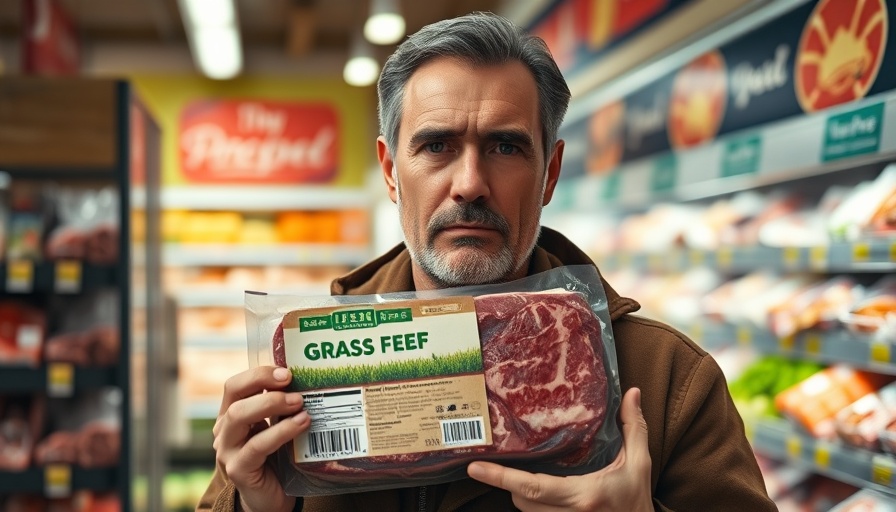
Unveiling the Truth: The Grass-Fed Beef Misconception
In today’s health-conscious world, the phrase “grass-fed beef” often evokes images of happy cows grazing in sunlit pastures. However, this idyllic notion crumbles under scrutiny. Recent discussions have highlighted that less than 1% of the beef sold in the U.S. is genuinely grass-fed. Instead, what many consumers believe to be healthy choices are often riddled with loopholes and misinformation, leading us to explore what it really means to consume 'grass-fed' products.
In 'This Will Piss You Off!', the discussion dives into the misconceptions surrounding grass-fed beef, exploring key insights that sparked deeper analysis on our end.
Why Grass-Fed Claims May Not Be What They Seem
One of the most alarming revelations is that the USDA dropped the official definition of grass-fed beef back in 2016. This means that the label 'grass-fed' can be misleading. In reality, many cows are only fed grass for a fraction of their lives. The final months typically involve grain-based diets, often sourced from questionable feedlots. These facilities contribute to a significant portion of what we consume, which is not only ethically concerning but also raises questions about health and nutrition.
The Cost of Cheap Meat: What’s on Your Plate?
Understanding what these animals actually consume presents another layer of complexity. Many are fed dried distillers grain with solubles—a waste product from ethanol production—alongside other substandard feed. This cheaper alternative drives down costs but compromises quality. Additionally, antibiotics and synthetic additives are regularly used to bulk up the animals for market, leading consumers to unknowingly consume higher levels of these substances.
A Closer Look at Feeding Conditions
Attention should also be drawn to the living conditions of these cows. In closed feedlots, cows live in areas as small as 24 square feet—less space than a standard parking spot! The implications for animal welfare are profound and raise ethical concerns. Even in open feedlots, space is limited, indicating a lack of humane treatment across the board.
Increasing Awareness: How to Choose Wisely
As consumers, awareness is our most powerful tool. To ensure what you’re eating aligns with your values, look for meat labeled as 100% grass-fed. Investing in such products not only supports sustainable and ethical farming practices but also ensures higher quality meat for your meals. While the price may be higher, the benefits of supporting small farmers and healthier livestock can be well worth it.
Fostering a Healthy Food Culture
Being informed allows us to advocate for transparency in food sourcing. As health-focused individuals, it’s essential to foster a food culture that values humane treatment and quality over convenience. By making intentional choices, we contribute to a demand that supports responsible farming practices.
Taking Action: Choose Health Over Hype
Ultimately, this awareness leads to better nutritional choices and cultivates a healthier lifestyle. The next time you’re at a grocery store or restaurant, remember the importance of knowing what’s on your plate. By paying attention to how our food is produced, we can make choices that reflect our values and support sustainable practices.
 Add Row
Add Row  Add
Add 




Write A Comment